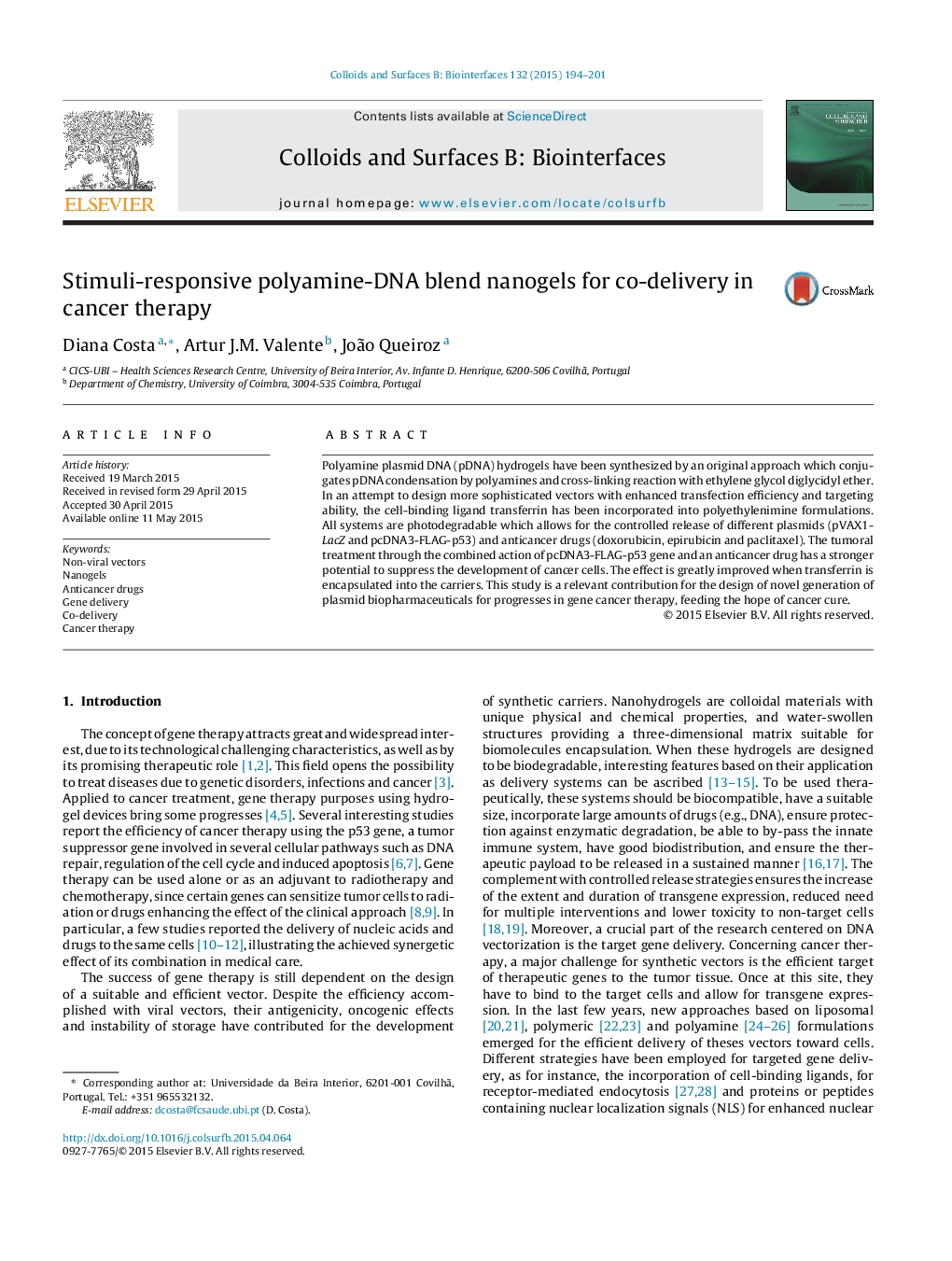| Article ID | Journal | Published Year | Pages | File Type |
|---|---|---|---|---|
| 599194 | Colloids and Surfaces B: Biointerfaces | 2015 | 8 Pages |
•Novel hydrogels have been synthesized by pDNA condensation and cross-linking.•To enhance transfection, transferrin has been incorporated into the gels.•The systems are photodegradable which promote the controlled release of biomolecules.•The tumoral treatment through the dual action of drug and gene is more effective.•This work is a great contribution for significant advances in cancer therapy.
Polyamine plasmid DNA (pDNA) hydrogels have been synthesized by an original approach which conjugates pDNA condensation by polyamines and cross-linking reaction with ethylene glycol diglycidyl ether. In an attempt to design more sophisticated vectors with enhanced transfection efficiency and targeting ability, the cell-binding ligand transferrin has been incorporated into polyethylenimine formulations. All systems are photodegradable which allows for the controlled release of different plasmids (pVAX1-LacZ and pcDNA3-FLAG-p53) and anticancer drugs (doxorubicin, epirubicin and paclitaxel). The tumoral treatment through the combined action of pcDNA3-FLAG-p53 gene and an anticancer drug has a stronger potential to suppress the development of cancer cells. The effect is greatly improved when transferrin is encapsulated into the carriers. This study is a relevant contribution for the design of novel generation of plasmid biopharmaceuticals for progresses in gene cancer therapy, feeding the hope of cancer cure.
Graphical abstractFigure optionsDownload full-size imageDownload as PowerPoint slide
